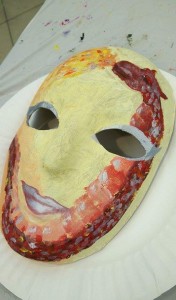This was second discussion based Rose Scholars event and it was hosted by a group of students who were taking IDP (Intergroup Dialogue Project). As a student taking IDP as well (in the Sexuality discussion however), I could see many aspects that reflected my own IDP group. Because of this, there were certainly parts where I was satisfied and dissatisfied about.
The issues we talked about were he stereotypes and expectations of the genders on either ends of the gender binary (ie. male and female). Because I am a person who enjoys listening to other people’s stories and experiences more so than to talk about my own, I was happy that there were students who enjoyed sharing.
Having gone to an all-girls school since the third grade, I feel that I did not experience as much of the gender socialization as many other students. Because all my classes had 100% girls, I never felt deterred from STEM field. In fact, I enjoyed STEM fields much more than I did with liberal arts. To me in high school, the notion that boys were encouraged to pursue STEM fields, while women, liberal arts, seemed like a myth to me.Hearing experiences of other students gave me a glimpse of what other students have gone through because of their gender.
Despite enjoying the discussion and the acceptance of other students who were attending, the workshop was not what I expected. When I heard of “Break the Box”, I thought that we would address and challenge the gender binary (ie. focus on the fact that gender is a spectrum, instead of a distinct binary). As a result, I had to spend the beginning of the discussion on readjusting my mindset. I feel that the discussion may have ignored those who are gender non-conforming. However, I do appreciate that a couple of the other students in the discussion did address this fact, making me feel like I was not the only one with that thought.
All in all, I wish that the even was longer so more topics about gender could have been covered.

